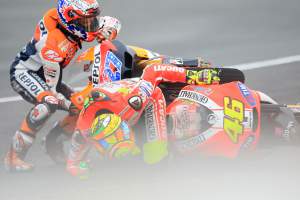As far as many are concerned, the current MotoGP regulations are about as well-balanced a rulebook as any motorsport series on earth.
They’re tailored to limit the advantages of outspending your opponents, put the emphasis on rider skill over technical dominance and lend a helping hand to new entries like KTM and Aprilia. This has led to some of the most spectacular racing imaginable in recent seasons.
But some will say that there’s always room for improvement, and one of both the most vocal and best qualified to call for change is none other than two-time champion Casey Stoner, who opened up on what he believes the series needs to chance on his recent visit to the paddock.
No stranger to speaking his mind even when that might not quite be in line with the common opinion, he’s long called for the series to return to its roots in making the motorcycles harder to ride.
Seeking to bring genuine talent to the fore rather than preventing the absolute best from shining – a complaint that’s been highlighted as the key safety change that also needs to be introduced to the Moto3 class after a particularly tragic year there – the Australian opened up to the media about what he believes needs to be altered.
But while some of his ideas make complete sense, others are perhaps not quite in keeping with the current thinking within the championship or might not prove as popular with the powers that ne. With that in mind, we looked at the key ideas pitched by Stoner – and how much of a chance there are they’ll see the light of day.
Reduced electronic aids
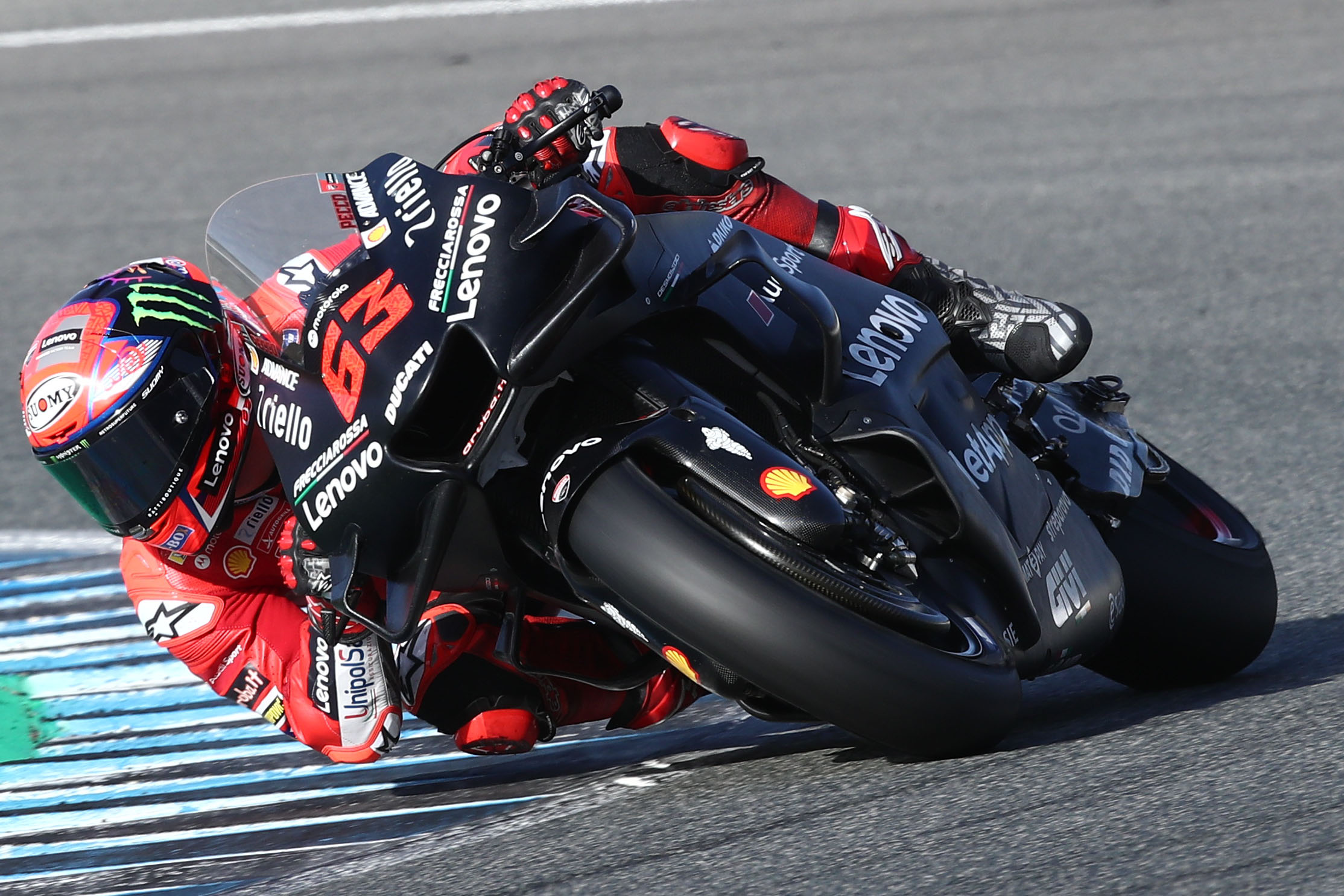
One area where Stoner has always been outspoken is the number of electronic aids presented to riders in the modern era. Anti-wheelie, traction control, electronic engine braking management all play a key role in riding a modern MotoGP bike – and, according to him, make it too easy.
“The electronics are morphing into each other and giving a more even playing field throughout the bikes,” he explained. “You’re not finding that some people each weekend are more able to look after tyres or find more grip. You’ll see a lot of the bikes all come out of the corner the same now and look very similar with the way that they apply the power.
“I think there needs to be a big reduction. I think it was back in 2016 when they brought in the equal ECU, and it was already better than what they had the year before. It wasn’t a step backwards like everyone thought it was going to be, and I honestly think we need a step backwards.”
And his reasoning for wanting that step backwards is a pretty straightforward one too – hoping that the result isn’t just that the cream rises to the top, but that the overall quality of racing improves as well.
“I want to see them sliding, I want to see the mistakes, I want to see people struggling for grip,” explained Stoner. “People starting the race really well because of their tyre selection, and people starting badly and coming forward. That would all happen with a few different regulations, and I think the overtaking would actually get better.
“It wouldn’t only be on the brakes, someone having to send it up the inside because they all come out of the corner the same way. You’d find someone messing up the exit and someone else getting the run on them. Changing a few things would make for some incredible racing.”
That’s something that might be met with resistance from both manufacturers and series bosses Dorna though, who are understandably cautious about tinkering with a system that has already proven to be highly successful since the introduction of the control ECU back in 2016.
Moreover, it’s going to be hard to convince manufacturers to give up something they’ve already got, especially when it has played such a key role in levelling the playing field. That’s before the safety ramifications of making bikes harder to ride are even spoken about. A definite no-go idea.
Stewarding
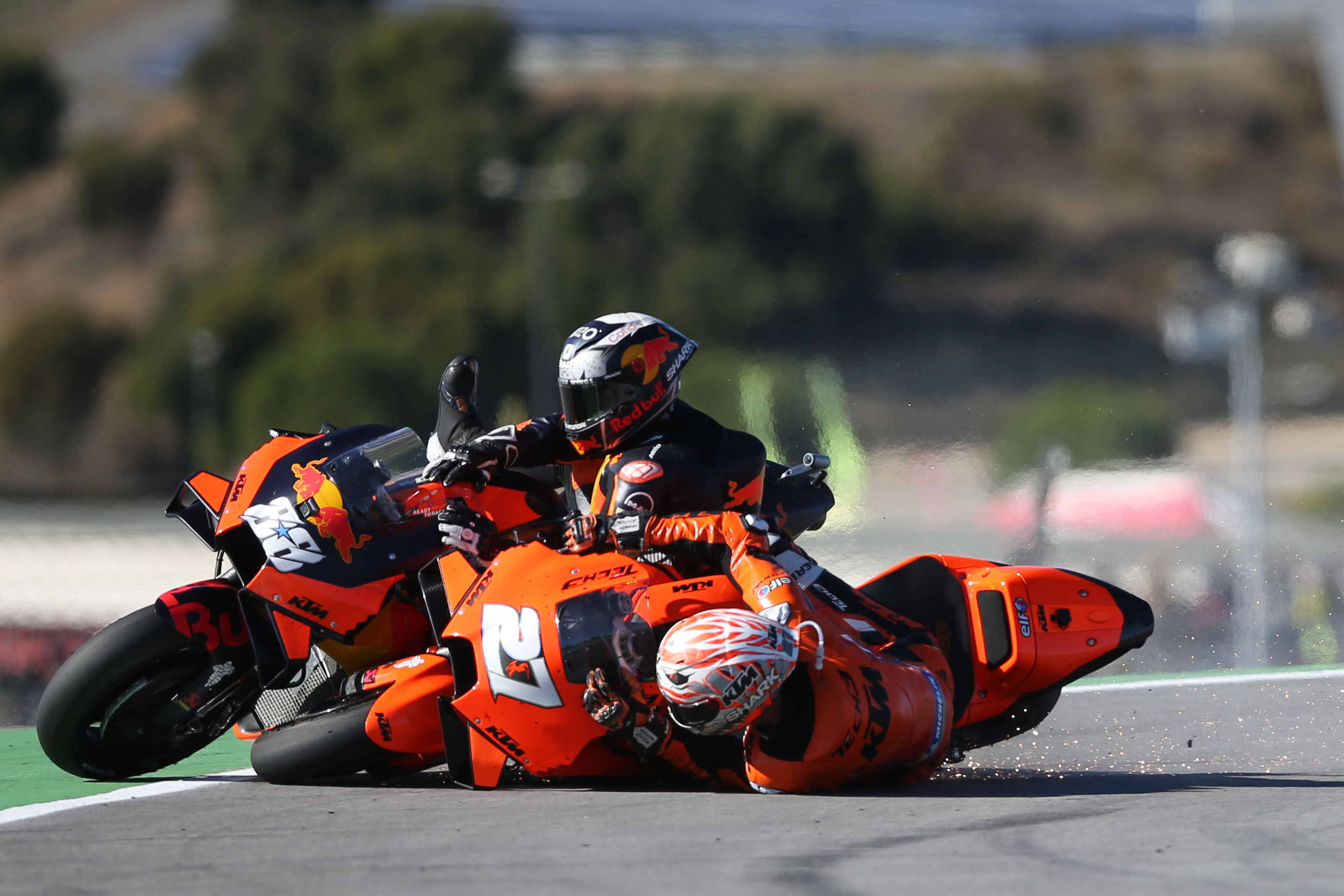
No stranger to the occasional bit of controversial on-track incidents during his own time in MotoGP (most famously his ‘ambition outweighing talent’ clash with Valentino Rossi), the current state of MotoGP’s stewarding was another area that came under fire from Stoner.
“I think there needs to be either more clarity or more definitive direction from race direction,” he admitted, “because there’s been no issue for so many years, and now that there’s all this leeway [there are problems]. I think everyone needs to have a little more respect for everyone else.
“I don’t just think it’s the young guys causing it, because I’ve seen a lot older and mature racers doing similar things. I think it all stems from the penalties and punishments not being harsh and definitive and clear enough. If there’s more of that then everyone will be more reserved.”
That’s not an unusual complaint to hear these days, either, with the FIM MotoGP Stewards Panel the frequent target of anger from many involved in racing.
Arguably, it’s one with a harsh if necessary solution too, given that only one thing has changed since Stoner’s time: the appointment of former world champion Freddie Spencer as the head judge.
Spencer has been a controversial figure since he replaced race director Mike Webb in the role in 2018, and while Stoner might not quite have called for his replacement, that’s something that many believe is now necessary. There’s been no sign of it happening yet, but given the almost-universal disappointment in the current state of MotoGP stewarding, it may yet reach a critical mass of complaints.
Unnecessary bike additions
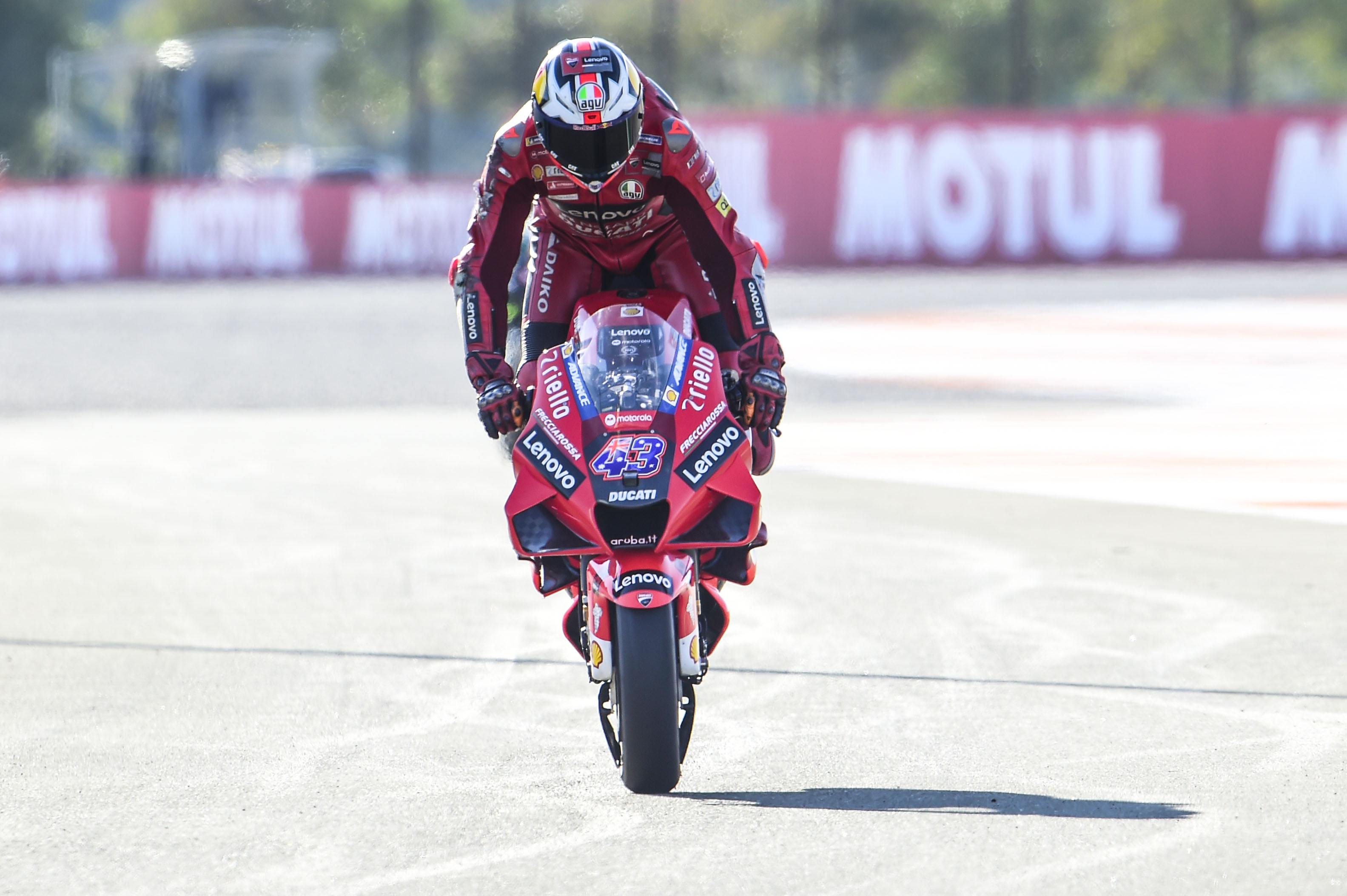
One technical area where many, especially the series’ traditional Japanese manufacturers, might be more in line with Stoner’s thinking is the plethora of new (and arguably unnecessary) parts that have appeared of late.
Not naming anything in particular when quizzed about it, it’s pretty clear where his ire is pointing though – the huge step forward in aerodynamics and the ride height devices which have become de rigueur of late; both areas where development has been led by his former bosses at Ducati.
“I would love to have a say in the technical regulations, to be honest,” he admitted. “There’d obviously be controversy, but there are elements there that definitely don’t need to be there – and it isn’t a safety issue. They’re only pushing the price of development through the roof while we’re still trying to make things more cost-effective.
“One of the things we’ve got has basically turned it into F1 and the costs are going through the roof. I would like to see certain parts gone.”
However, it’s Ducati that might be the biggest obstacle to this, both because of the advantages it gains and because of the amount of money it has already invested into the technology.
Starting out as a cheeky (and clever) way to work around the limitations of its bike, the suspension adjusters and wings are now key elements in Ducati’s design philosophy – and as much as many fans would agree with Stoner, they’re not going away either.
Track runoff
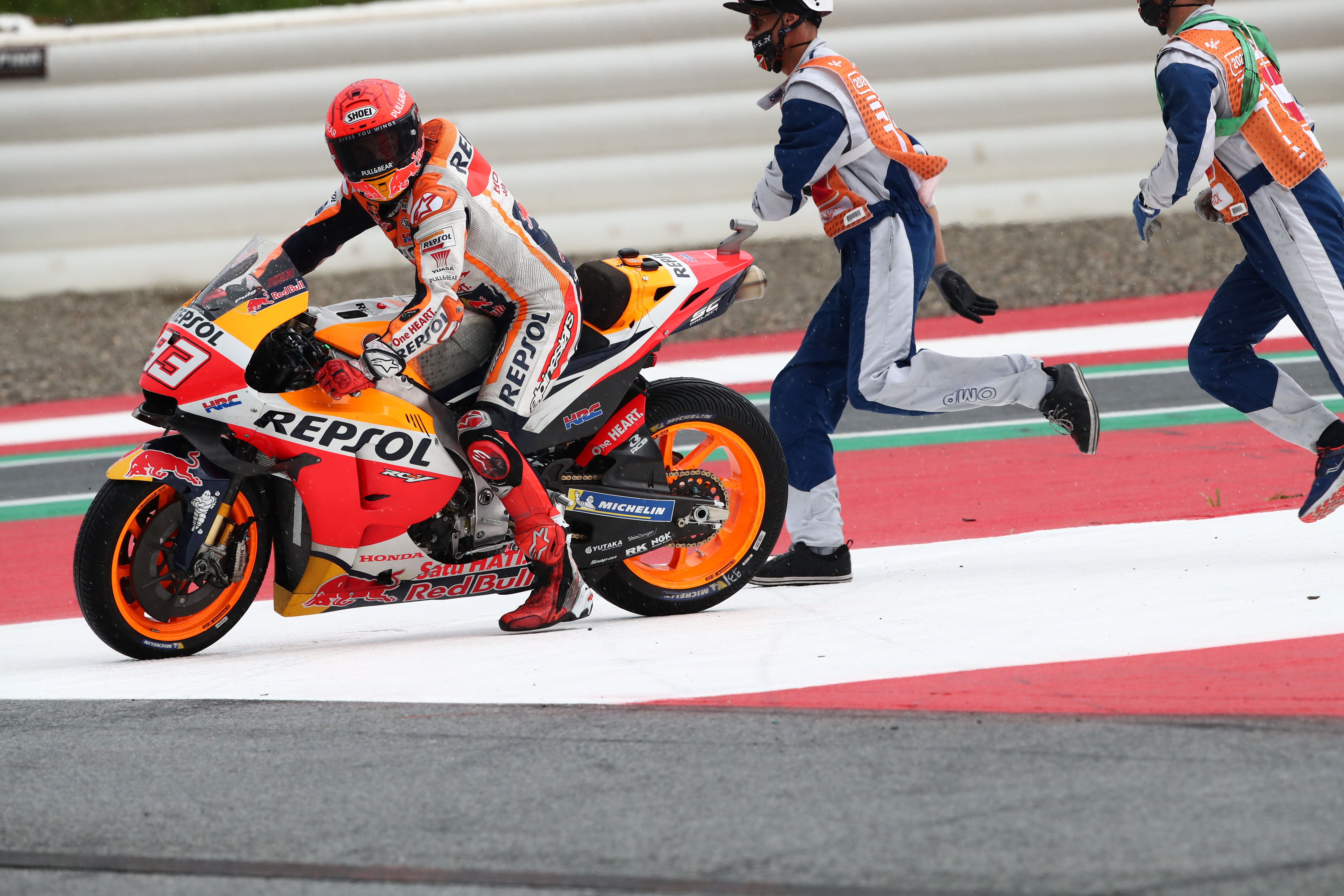
Another area where Stoner has perhaps a somewhat old-school approach is the always-topical issue of track limits.
The edges of most MotoGP tracks are now marked out by green paint as opposed to the grass (or astroturf) he grew up with, and asphalting over the softer surfaces bordering the track has unleashed a whole new problem of enforcing track limits – and according to Stoner, has made for dirtier riding to boot.
“There’s no edge of the track anymore – it just keeps going, and it’s limited by some green paint,” he stressed. “It doesn’t help the situation, because people have no fear anymore. Before, when there was green grass, everyone had to check themselves, and now it’s like ‘hey, I’ll bust him and it doesn’t matter. He’ll run off but there’s plenty of track’.
“For me, the worst thing that’s happened to motorcycle racing is all that extra runoff. There’s just no edge of the track, no limit, and that makes it very hard to contain everyone.”
Yet while he might feel that way, the reality is that it’s traded one sort of potentially serious crash for a much safer alternative. Yes, changing the nature of the track limits might make for more aggressive racing – but it also means that the punishment for running wide is no longer an aggressive highside right into the path of oncoming bikes.
Now there’s a greater emphasis than ever before on preventing contact between fallen riders and other machines, moving back towards grass runoff feels like a regressive step – and hopefully not one where Stoner’s opinions are given too much weight.







